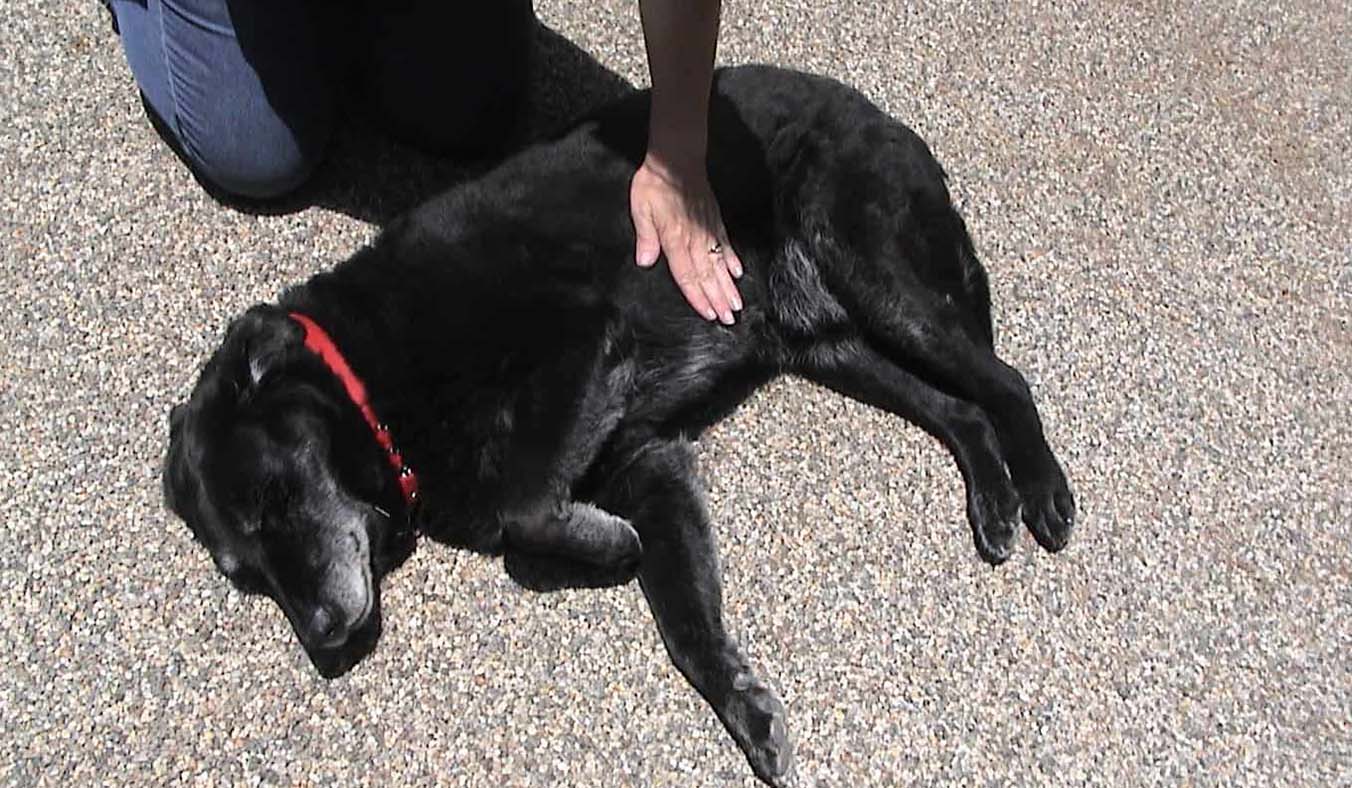Canine hemophilia is a rare inherited bleeding disorder characterized by the deficiency or dysfunction of clotting factors in a dog’s blood. Hemophilia in dogs mirrors the condition seen in humans, albeit with some differences. It explores what canine hemophilia is, the breeds prone to the disease, methods of detection, and treatment options, including the pioneering work of Dr. Von Willebrand.
Understanding Canine Hemophilia: A Closer Look
Canine hemophilia, much like its human counterpart, is a genetic anomaly that disrupts the blood’s ability to clot effectively. Within a dog’s body, there are vital clotting factors responsible for stemming bleeding and facilitating wound healing. However, in cases of hemophilia, these factors are either deficient or dysfunctional, leaving the canine vulnerable to prolonged bleeding even from minor injuries.
The Genetic Quandary:
At its core, canine hemophilia is a result of genetic mutations that interfere with the production or functionality of clotting factors. These mutations are often inherited from the dog’s parents, placing certain breeds at a higher risk. It’s a complex interplay of genetic inheritance that underscores the importance of responsible breeding practices.
The Implications of Deficiency:
When a dog lacks these crucial clotting factors, the implications can be dire. Even a simple scratch or bruise can escalate into a life-threatening situation, with excessive bleeding that’s difficult to control. In severe cases, internal bleeding into muscles or joints can occur spontaneously, posing significant health risks to the affected canine.
The Urgency of Management:
Proper management of canine hemophilia is paramount to the dog’s well-being. This involves vigilant monitoring for any signs of bleeding, prompt intervention during bleeding episodes, and proactive measures to prevent complications. With the right approach, dogs with hemophilia can lead fulfilling lives despite their condition.
A Lifesaving Paradigm:
While canine hemophilia presents significant challenges, it’s not a hopeless situation. Advances in veterinary medicine, including innovative treatments and genetic screening techniques, offer hope for affected dogs and their families. With ongoing research and dedication from veterinarians and researchers worldwide, the landscape of hemophilia management in dogs continues to evolve, promising brighter prospects for canine patients.
Breeds Prone to Canine Hemophilia: A Genetic Predicament

In the intricate tapestry of canine genetics, certain breeds find themselves more susceptible to the complexities of hemophilia. While this disorder can manifest in any dog, some breeds bear a higher burden due to genetic predispositions. Let’s delve into the breeds commonly affected by canine hemophilia and explore the implications for these beloved companions.
German Shepherds:
With their noble stature and unwavering loyalty, German Shepherds are renowned for their versatility and intelligence. However, beneath their regal exterior lies a vulnerability to hemophilia. Genetic factors predispose these magnificent canines to the disorder, necessitating vigilant monitoring and proactive management.
Golden Retrievers:
Golden Retrievers, with their gentle demeanor and boundless affection, often capture the hearts of dog lovers worldwide. Yet, lurking within this breed’s genetic makeup is a heightened susceptibility to hemophilia. Despite their sunny disposition, Golden Retrievers face the shadow of this inherited disorder, underscoring the importance of breed-specific health considerations.
Doberman Pinschers:
Sleek and statuesque, Doberman Pinschers exude an aura of strength and elegance. However, beneath their poised exterior lies a vulnerability to hemophilia that cannot be overlooked. Genetic predispositions within the Doberman Pinscher breed underscore the need for heightened awareness and proactive measures to mitigate the risks associated with this disorder.
A Universal Concern:
While German Shepherds, Golden Retrievers, and Doberman Pinschers may bear the brunt of canine hemophilia’s genetic burden, it’s crucial to recognize that no breed is immune. From the smallest toy breeds to the largest working dogs, hemophilia can manifest in any canine, making vigilance and informed breeding practices imperative for all responsible dog owners.
Charting a Path Forward:
In navigating the landscape of canine hemophilia, breed-specific considerations play a pivotal role in promoting health and well-being. Through genetic screening, responsible breeding practices, and ongoing research initiatives, the collective efforts of veterinarians, breeders, and dog enthusiasts alike strive to safeguard the welfare of our cherished canine companions, ensuring a brighter future for generations of dogs to come.
Unraveling Canine Hemophilia: A Comprehensive Diagnosis
Diagnosing canine hemophilia requires a meticulous approach, blending clinical expertise with advanced diagnostic tools. Veterinarians employ a multifaceted strategy encompassing physical assessments, specialized blood analyses, and cutting-edge genetic screenings to unravel the complexities of this inherited bleeding disorder. Let’s delve into the intricacies of each diagnostic modality and its role in identifying canine hemophilia.
Physical Examinations:
The diagnostic journey begins with a thorough physical examination, where veterinarians meticulously scrutinize the dog for signs of bleeding abnormalities. They observe for subtle bruising, prolonged bleeding from minor wounds, or spontaneous hemorrhages into tissues. These clinical observations provide invaluable initial insights into the possibility of hemophilia and guide subsequent diagnostic steps.
Blood Tests:
Blood serves as a window into the dog’s clotting cascade, offering vital clues to the presence of hemophilia. Specialized blood tests, including coagulation profiles and clotting factor assays, are indispensable tools in diagnosing this disorder. By analyzing clotting factor levels and assessing blood coagulation dynamics, veterinarians can pinpoint abnormalities indicative of hemophilia and differentiate it from other bleeding disorders.
Genetic Screenings:
Genetic screenings play a pivotal role in identifying the underlying genetic mutations responsible for canine hemophilia. These screenings leverage state-of-the-art technologies to analyze the dog’s DNA and detect specific gene mutations associated with the disorder. By uncovering the genetic basis of hemophilia, veterinarians gain invaluable insights into the dog’s risk profile and inform treatment strategies and breeding decisions.
A Holistic Approach:
Diagnosing canine hemophilia demands a holistic approach that integrates clinical expertise, laboratory diagnostics, and genetic insights. Through a synergistic combination of physical examinations, blood tests, and genetic screenings, veterinarians can achieve a comprehensive understanding of the dog’s hemostatic status and formulate tailored management plans. This collaborative effort underscores the importance of interdisciplinary collaboration and underscores our commitment to optimizing the health and well-being of our canine companions.
Empowering Treatment and Care:
Armed with a precise diagnosis, veterinarians can empower pet owners with the knowledge and resources needed to effectively manage canine hemophilia. From tailored treatment regimens to genetic counseling and preventive measures, a comprehensive diagnosis lays the foundation for compassionate and proactive care. Together, we navigate the complexities of hemophilia, advocating for the best interests of our beloved canine patients and fostering a brighter future for canine health.
Navigating Canine Hemophilia: A Roadmap to Treatment

Treating canine hemophilia demands a strategic approach that addresses bleeding episodes and mitigates the risk of complications. Veterinarians draw upon a repertoire of interventions, ranging from clotting factor replacement therapies to supportive care measures, to safeguard the health and well-being of dogs with this inherited bleeding disorder. Let’s explore the intricacies of treatment for canine hemophilia and the multifaceted strategies employed to optimize outcomes.
Clotting Factor Replacement Therapies:
At the heart of hemophilia management lies the replenishment of deficient clotting factors. Veterinarians administer clotting factor concentrates or fresh frozen plasma to bolster the dog’s coagulation cascade and facilitate clot formation. These therapies serve as a lifeline during bleeding episodes, restoring hemostasis and minimizing the risk of excessive bleeding.
Supportive Care Measures:
Beyond clotting factor replacement, supportive care plays a pivotal role in managing canine hemophilia. Veterinarians implement meticulous wound management techniques to staunch bleeding and promote healing. This may involve the application of pressure dressings, hemostatic agents, or sutures to control hemorrhage and prevent further blood loss.
Pain Management:
Bleeding episodes in canine hemophilia can cause discomfort and distress for affected dogs. To alleviate pain and enhance comfort, veterinarians prescribe analgesic medications tailored to the dog’s individual needs. From nonsteroidal anti-inflammatory drugs to opioid analgesics, pain management strategies aim to enhance the dog’s quality of life amidst the challenges of hemophilia.
Proactive Monitoring and Prevention:
Ongoing monitoring and preventive measures are essential components of hemophilia management. Veterinarians vigilantly assess the dog’s clotting status, conducting regular blood tests to gauge clotting factor levels and adjust treatment regimens accordingly. Additionally, pet owners play a pivotal role in preventing bleeding episodes by minimizing the risk of trauma and adhering to prescribed treatment protocols.
Empowering Hope Through Compassionate Care:
In the realm of canine hemophilia treatment, each intervention serves as a beacon of hope, illuminating the path toward improved outcomes and enhanced well-being. Through a collaborative effort between veterinarians, pet owners, and canine companions, we navigate the complexities of hemophilia with compassion and resolve. Together, we empower dogs with hemophilia to lead fulfilling lives, defined not by the challenges they face, but by the resilience and determination that epitomize their spirit.
Canine hemophilia is a serious condition that requires prompt diagnosis and appropriate management. Through advances in veterinary medicine and the dedication of researchers like Dr. Von Willebrand, affected dogs can lead fulfilling lives with proper treatment and care.



